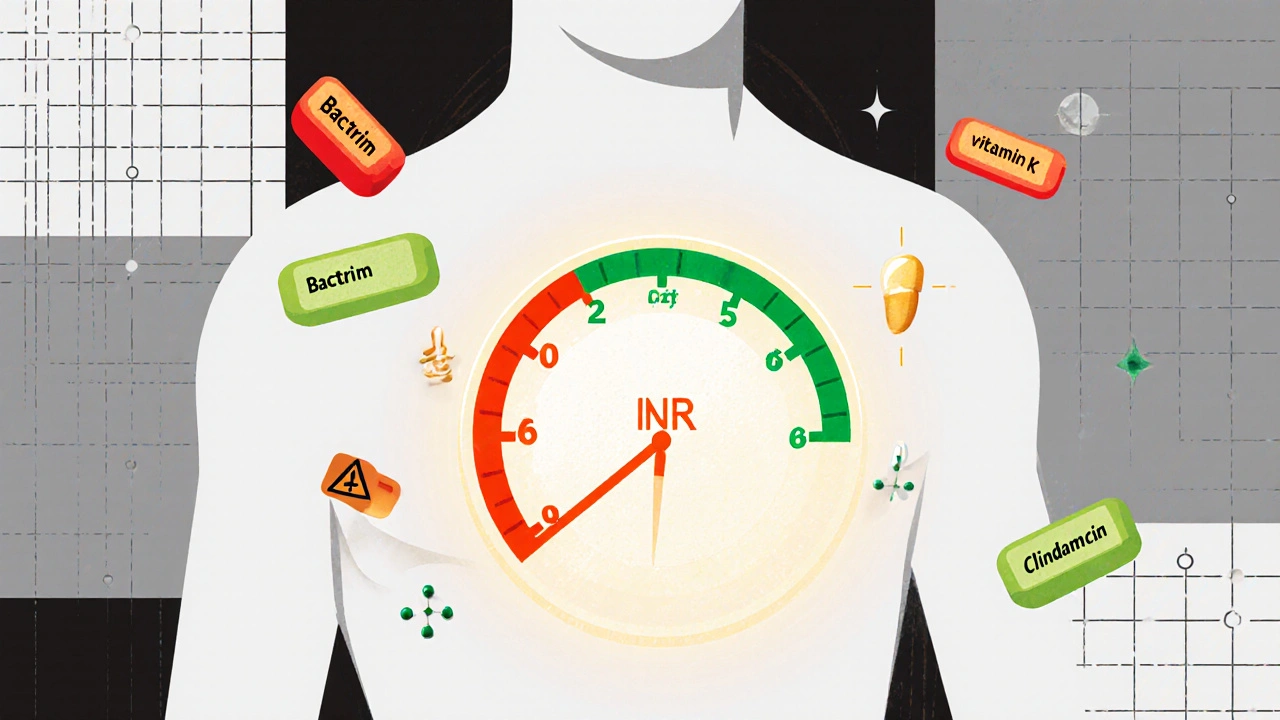Warfarin Dose Adjustment: How to Get It Right and Avoid Dangerous Side Effects
When you're on warfarin, a blood thinner used to prevent dangerous clots in people with atrial fibrillation, artificial heart valves, or deep vein thrombosis. Also known as coumadin, it's one of the most commonly prescribed anticoagulants—but getting the dose wrong can lead to a stroke or serious bleeding. There’s no one-size-fits-all dose. Your warfarin dose adjustment depends on your body’s response, what you eat, other meds you take, and even your genetics.
That’s where INR monitoring, a blood test that measures how long it takes your blood to clot comes in. Doctors use INR numbers to decide if your dose needs to go up, down, or stay the same. Most people aim for an INR between 2 and 3, but some conditions like mechanical heart valves need higher levels. If your INR is too low, you’re at risk for clots. Too high, and you could bleed internally without warning. That’s why regular testing isn’t optional—it’s life-saving.
Drug interactions, especially with antibiotics, painkillers, and even herbal supplements, can throw your warfarin levels off track. For example, taking amoxicillin or fluconazole might boost warfarin’s effect, while St. John’s wort can make it less powerful. Even your coffee intake matters—caffeine can slow how fast your liver breaks down warfarin, leading to higher levels in your blood. And don’t forget vitamin K. It’s in spinach, kale, broccoli, and Brussels sprouts. Eating more or less than usual can flip your INR like a switch. Consistency is key.
Some people think once they’re on a stable dose, they’re set for life. That’s not true. Weight changes, new illnesses, even travel can force a dose adjustment. Older adults are especially sensitive—small changes in kidney or liver function can have big effects. That’s why so many posts here focus on safe medication use in seniors, like how diabetes meds or antacids can interfere with other drugs. Warfarin doesn’t play nice with anything.
You won’t feel when your dose is wrong. No tingling, no warning sign. That’s why tracking matters more than intuition. If you’ve ever had to adjust your insulin or thyroid meds, you know how precise these drugs need to be. Warfarin is the same. It’s not about guessing. It’s about testing, recording, and communicating with your care team.
Below, you’ll find real-world advice from people who’ve been there. From how caffeine affects your INR to why certain antibiotics can turn a safe dose into a danger zone. No fluff. No theory. Just what works—and what doesn’t—when you’re managing warfarin dose adjustment day after day.

Managing Warfarin and Antibiotics: Common Interaction Issues
- Nov, 1 2025
- 9
Warfarin and antibiotics can interact dangerously, raising bleeding risk. Learn which antibiotics are safest, when to check your INR, and how to avoid serious complications without stopping your medication.
Categories
- Health and Wellness (51)
- Medicine (36)
- Health and Medicine (23)
- Women's Health (9)
- Mental Health (8)
- Men's Health (7)
- Beauty and Wellness (4)
- Health Information (4)
Archives
- December 2025 (12)
- November 2025 (25)
- October 2025 (27)
- September 2025 (14)
- August 2025 (3)
- July 2025 (2)
- June 2025 (2)
- May 2025 (3)
- April 2025 (4)
- March 2025 (4)
- February 2025 (2)
- January 2025 (3)
- online pharmacy
- medication safety
- dietary supplement
- health benefits
- dietary supplements
- prevention
- fertility
- online pharmacy Australia
- treatment
- treatment options
- benefits
- connection
- drug interaction
- drug interactions
- pregnancy
- Cancer Treatment
- depression medication
- antidepressants
- quality of life
- anxiety treatment
